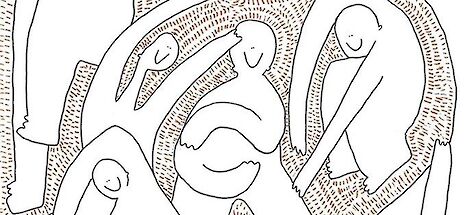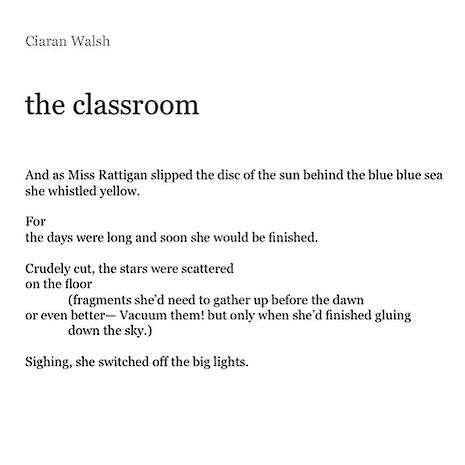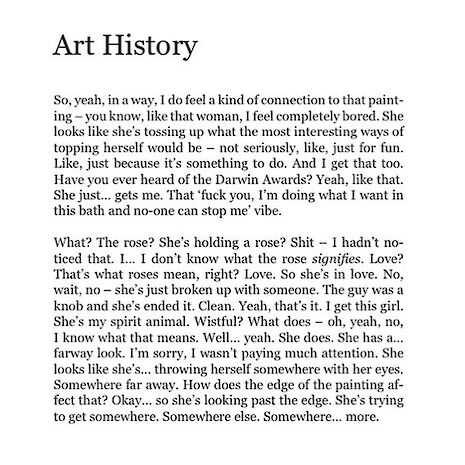‘Bursting with talent and joy’ Notes at 50 Issues
For six years, student publication Notes has been championing the work of its submitters. Ahead of their 50th isssue, Reuben Andrews interview the editors.

Cambridge is a paradoxical place for creatives. On one hand, it’s steeped in centuries of culture, from writing and painting to architecture; on the other, its lack of centralised locations makes meeting fellow artists difficult, and its academically pressurised nature can often contaminate student art with overly self-critical perspectives. For all its history and awe, Cambridge can be a lonely and demoralising place.
This paradox is precisely the reason why a publication like Notes is so vital to the Cambridge creative scene. Founded six years ago, Notes runs a fortnightly edition each week of Michaelmas and Lent term, with a shorter edition, Footnotes, in Easter term. Each edition is coupled with a launch — a free and lively event with music and readings — and every submission receives detailed feedback. The launches and termly writing groups provide unity for artists and art-lovers who attend disparate colleges, and the feedback gives much-needed encouragement.
In short, Notes offers students more than a publication, it offers a community. And this community has only gone from strength to strength over the past six years, with the publication now gearing up to launch its 50th issue. Before its launch on Wednesday the 25th, I had a chance to ask the team a few questions about what makes Notes so special.
"Fifty issues is quite an achievement. Why do you think Notes has been able to reach that milestone?"
Jun Pang (Senior Editor)
"It’s really difficult to keep creative projects going in Cambridge because of rapid turnover and short attention spans. I think Notes has managed to stick around for 50 issues – and 6 years! – because it provides a particular function as the creative home that people start off in, and can always come back to. We have made a space in which anyone – from those just starting out to those who have published multiple books of poetry – can submit their work and get it published – and we have tried our best to make it a supportive, encouraging, constructive community."

"Is there are particularly heart-warming memory you have of your time at Notes?"
Xanthe Fuller (Editor)
"Notes has been a source of lots of lovely memories over the last year, from the gently heart-warming to the hugely joy-giving. But one particular memory stands out. At a launch in week 6 or so of Michaelmas Term, it was in an underground room far from the centre. We always have live music and for that launch we had a jazz and funk group that was a bit at odds with the atmosphere of the people who attended the launch and the underground room. But after some of the contributors had read their pieces, the music just took over, and by the end of the launch we had the Notes team, some contributors and a disorientated drinking society (who had followed the music and found the launch) dancing to Valerie. It was a completely different kind of launch, a surprise to us all, as it was just so surreal. But it captured what Notes is in a real, embodied way, bursting with talent and joy: very alive.

"If people are looking to submit in the future, what advice would you give them?"
Alessandro M. Rubin (Editor)
"At Notes, we pride ourselves on encouraging and nurturing diversity. Develop your own personal style and tailor an interesting point of view. Whether you write in one quick session or over a longer period, be careful about the words you use, the register, the cohesiveness of the layout. When we read many pieces for each issue, those with a clear and consistent style stand out immediately. Be sure that your work has a clear character and an identifiable form. Not all your work must be unique, but you should always try to make it recognisable, in other words yours."

"And finally, where do you see Notes in another fifty issues time? What do you hope is built on, and what should stay the same?"
Alessandro M. Rubin
"Notes’s reliable and constant presence throughout Cambridge terms has helped us build a loyal community of contributors. I think it is important that we maintain the aura of approachability that has characterised the magazine so far; at the same time, I believe it is time for us to try and expand even further. For example, we have made some trials to introduce a termly series of writing workshops. So far, the responses have been positive and we hope to make them a stable counterpart to our printed issues. We intend to grow while keeping the individual attention that each of our contributors deserves."
Jun Pang
"Please submit work to us! Having been an Editor for 3 years, I have seen so many people submit to us for the first time, and then keep submitting, or even submitting to bigger publications. We read everything that is sent into us, and we offer constructive feedback from the perspective of student peers – if anything, it’s just lovely to be able to have conversations with people about their work.
Notes is built on the work and care of six generations of Cambridge students and residents, not to mention the hundreds of people who have submitted to and collaborated with us over the years, including the Fitzwilliam Museum Society, Cambridge SCA, and Cambridge PEN. From the beginning, we have been led by women and people of colour – in the last two years, our senior editors have been queer women of colour. As a result, we have managed to uphold an ethic of inclusivity, providing a platform for people to engage in creative projects, especially if they have been discouraged or prevented from doing so in the past. I hope our community continues to flourish and grow, and that it continues to be a lovely space to meet likeminded people!"
Notes 50th Issue launch is at 19.30 on Wednesday the 25th of April. It will be hosted in the CUCWinebar
 News / Caius mourns its tree-mendous loss23 December 2025
News / Caius mourns its tree-mendous loss23 December 2025 Comment / Yes, I’m brown – but I have more important things to say22 December 2025
Comment / Yes, I’m brown – but I have more important things to say22 December 2025 News / Cambridge welcomes UK rejoining the Erasmus scheme20 December 2025
News / Cambridge welcomes UK rejoining the Erasmus scheme20 December 2025 News / CUP announces funding scheme for under-represented academics19 December 2025
News / CUP announces funding scheme for under-represented academics19 December 2025 Interviews / Politics, your own way: Tilly Middlehurst on speaking out21 December 2025
Interviews / Politics, your own way: Tilly Middlehurst on speaking out21 December 2025









